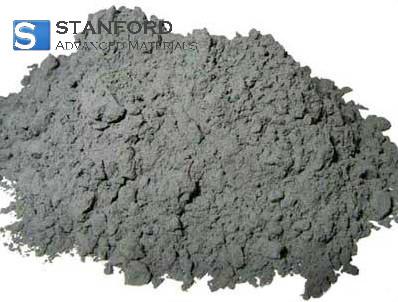


Molybdenum Powder is a kind of gray metallic powder, the raw material for preparing other molybdenum products. Stanford Advanced Materials (SAM) is a trustworthy supplier of Molybdenum Powder (Mo Metal Powder). Molybdenum powder is used for processing fabricated metal products and machine parts such as wire, sheets, sintered alloys, and electronic components.
Related products: Nano Molybdenum Powder (Mo), Molybdenum Powder for Thermal Spraying, Spherical Molybdenum Rhenium Alloy Powder




Molybdenum Powder is a kind of gray metallic powder, the raw material for preparing other molybdenum products. Stanford Advanced Materials (SAM) is a trustworthy supplier of Molybdenum Powder (Mo Metal Powder). Molybdenum powder is used for processing fabricated metal products and machine parts such as wire, sheets, sintered alloys, and electronic components.
Related products: Nano Molybdenum Powder (Mo), Molybdenum Powder for Thermal Spraying, Spherical Molybdenum Rhenium Alloy Powder




Molybdenum (Mo) is a gray metal known for its extremely high melting point. It occurs in various oxidation states within minerals but is not found naturally as a free metal. Molybdenum is renowned for its strength and stability under high-heat conditions. It is commonly alloyed with other elements to enhance corrosion resistance and maintain strength at elevated temperatures. Therefore, molybdenum is widely used in the production of steel alloys, high-strength alloys, and superalloys.
Molybdenum powder, characterized by its uniform gray color and lack of visible mechanical impurities, is typically produced using ammonium paramolybdate or calcined MoO3 as raw materials, which are then reduced with hydrogen. This powder serves as the primary material for producing advanced molybdenum products through powder metallurgy.

|
Item No. |
Item Name |
Purity |
|
ME42-2N |
Molybdenum Metal Powder |
99% |
|
ME42-2N5 |
Molybdenum Metal Powder |
99.5% |
|
Grade |
MP-1 |
MP-2 |
MP-3 |
|
|
Mo (%) ≥ |
99.95 |
99.90 |
99.80 |
|
|
Impurities (ppm) ≤ |
Fe |
50 |
60 |
100 |
|
Al |
15 |
20 |
50 |
|
|
As |
10 |
— |
— |
|
|
Ba |
10 |
— |
— |
|
|
C |
40 |
75 |
— |
|
|
Ca |
20 |
20 |
50 |
|
|
Co |
30 |
— |
— |
|
|
Cr |
20 |
30 |
— |
|
|
Cu |
10 |
20 |
30 |
|
|
K |
20 |
— |
— |
|
|
Mg |
10 |
20 |
20 |
|
|
Mn |
5 |
10 |
— |
|
|
Na |
10 |
— |
— |
|
|
Ni |
10 |
20 |
10 |
|
|
O |
500-1000 |
2000 |
2500 |
|
|
P |
10 |
20 |
— |
|
|
Pb |
10 |
10 |
— |
|
|
S |
20 |
— |
— |
|
|
Si |
10 |
30 |
200 |
|
|
Ti |
10 |
10 |
— |
|
|
W |
100 |
300 |
— |
|
• High Melting Point
• High Strength and Hardness
• Excellent Thermal and Electrical Conductivity
• Corrosion Resistance
• Low Thermal Expansion Coefficient: Similar to glass and ceramic materials.
• Used to produce molybdenum-based alloys and molybdenum steel, which are utilized to manufacture high-strength, high-hardness tools, molds, and high-temperature equipment.
• Used to manufacture conductive and thermal management materials in electronic devices, such as electrodes, contacts, and heat sinks.
• Used in the aerospace sector to produce engine components and high-temperature structural materials.
• Used to manufacture corrosion-resistant chemical equipment, such as reactors and pipelines, as well as a carrier material for catalysts.
• Used to produce glass and ceramic components with low thermal expansion coefficients, especially where bonding with metal parts is required.
• Used as a chemical catalyst, detonation initiator, metal matrix composite, and sputtering target.
| FlameHealth hazard | GHS02, GHS08 |
| Signal Word | Danger |
| Hazard Statements | H228 - H361f |
| Precautionary Statements | P202 - P210 - P240 - P241 - P280 - P308 + P313 |
| Hazard Classifications | |
| Storage Class Code | 4.1B - Flammable solid hazardous materials |
| WGK | nwg |
Our molybdenum powder is clearly tagged and labeled externally to ensure efficient identification and quality control. Great care is taken to preserve the quality of the product in its original condition.
Related articles:

